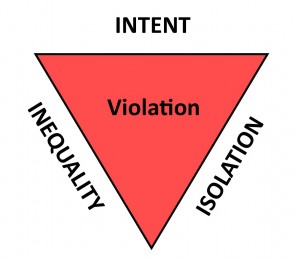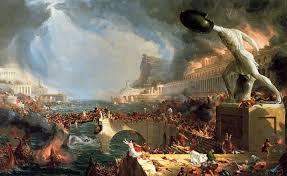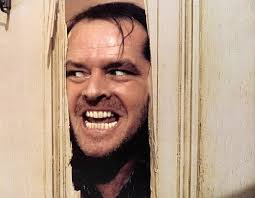
Violation Triangle - Erik Kondo

The 3I Elements work together to create a perfect storm of violating synergy. Each Element also has the ability to effect the other Elements. In the same manner that “Absolute power corrupts absolutely”, so does having high RPCS raise some people’s degree of violating intent. Being isolated with a suitable victim may encourage a potential perpetrator’s violating intent, i.e. creating a crime of opportunity. Having high malicious intent and motivation is a factor that leads to higher RPCS.
Once the concepts of the Violation Triangle are understood, it becomes much easier to find strategies to defeat it. TheViolation Triangle allows specific methods of violation prevention to be examined for logical truths and flaws. For example, some claim that binge drinking on college campuses increases the rate of male to female sexual assault. While other’s claim alcohol is not a factor. The Violation Triangle clarifies the issue.
Assume a college party held on school grounds that is well policed. All the party goers spend the entire night in the same large on room with the lights on and there are no isolated locations. In this case, regardless of how drunk the women get, and even with the presence of some men with “rapist” intent, the lack of opportunity to isolate victims from protective resources makes incidents of sexual assault unlikely.
Or assume, the local Anti-Sexual Violence against Women chapter holds an invitation only mixed gender sleep over with an open bar at local guest house. Regardless of how much the invitees drink, the lack of guests with “rapist” intent and the general parity of RPCS will eliminate the occurrence of a sexual assault.
On the other hand, assume the party is held at a local fraternity with numerous bedrooms, private areas and darkened corners without policing supervision. This fraternity houses several men with high RPCS, and these same men have sexually aggressive tendencies or outright violating intent. A woman who is drunk has effectively lowered her RPCS. She now has impaired judgment and decision making, a parallel to the impaired judgment and decision making of the highest category of sexual assault victims – the development disabled. The more of these drunken women at the party, the more likely one or more of them will be selectively isolated by a high RPCS man with bad intent. The likely result will be a sexual assault.
The Violation Triangle applies to not only sexual assault. It applies to bullying, abuse, harassment, dating and domestic violence, and more. The Violation Triangle is a tool to understand and evaluate how to prevent violations from occurring both on an individual level and also on a systemic multi-incident basis.
INTENT - Erik Kondo

INTENT is the most variable of the 3I Elements. It defines the perpetrator’s motivation or desire to commit a violating act. As with all humans, the perpetrator’s motivation is transitory. It is subject to change. The magnitude of a person’s intent is a function not only of the individual’s emotional drive and hard wiring, it is also effected by the circumstances of the situation, and influenced by cultural norms.
The quest to change the “sexually violating” intent of men is the focus of some feminist “Teach Men Not to Rape” campaigns. The unproven theory is that with proper (feminist) education and social pressure, men’s sexually aggressive bad INTENT will be reduced. Thus resulting in lower incidents of sexual assault in society.
INTENT is influenced in many ways. The concept behind societal enforcement and punishment is a direct attempt to lower bad intent by creating a deterrence to committing future violations. Enforcement can also come directly from the actions of an individual as he or she uses force to stop and punish violations. Throughout history physical pain has proven to be an effective method to change a person’s motivation.
Intent may also vary depending upon the parties involved. A perpetrator who may have a low threshold of intent may be deterred by effective boundary setting. In this case, the perpetrator is risk adverse and is only willing to assault the most hapless of victims, i.e. someone with much lower RPCS in an isolated setting.
Intent may also result from having an anti-social personality. As with the case with psychopaths, these individuals by definition due not conform to the norms of society. Anti-rape education will not lower the violating intent of these people. The combination of this type of person with high RPCS along with the multiple opportunities to isolate lower RPCS people usually results in serial victimizations.
The following video talks about Intent in the form human evil.
About the Violation Triangle - Erik Kondo

The Violation Triangle is a model that explains the creation and existence of human violations in society both on an individual basis and also on a systemic multi-incident basis. And it shows the steps necessary to reduce the violations.
The Violation Triangle utilizes the same three element concept of the Fire Triangle. In order to create and sustain fire, there must be three elements present: heat, fuel and air. The combination of these elements in sufficient quantities makes fire and keeps it going. Knowledge of the Fire Triangle is essential to devising the most effective strategy to extinguish a fire. Depending upon the circumstances, fire-fighters will attempt to remove one or more of these elements to put out the fire. For example, water reduces heat, foam takes away air, and creating a fire-break denies fuel.
DOWNLOAD the 2 Page handout on the Violation Triangle.
About the Violation Triangle - Erik Kondo

The Violation Triangle is a model that explains the creation and existence of human violations in society both on an individual basis and also on a systemic multi-incident basis. And it shows the steps necessary to reduce the violations.
The Violation Triangle utilizes the same three element concept of the Fire Triangle. In order to create and sustain fire, there must be three elements present: heat, fuel and air. The combination of these elements in sufficient quantities makes fire and keeps it going. Knowledge of the Fire Triangle is essential to devising the most effective strategy to extinguish a fire. Depending upon the circumstances, fire-fighters will attempt to remove one or more of these elements to put out the fire. For example, water reduces heat, foam takes away air, and creating a fire-break denies fuel.
DOWNLOAD the 2 Page Handout on the Violation Triangle.
The Violation Triangle - Erik Kondo
The Violation Triangle is a model that explains the creation and existence of human violations in society both on an individual basis and also on a systemic multi-incident basis. And it shows the steps necessary to reduce the violations.
The Violation Triangle utilizes the same three element concept of the Fire Triangle. In order to create and sustain fire, there must be three elements present: heat, fuel and air. The combination of these elements in sufficient quantities makes fire and keeps it going. Knowledge of the Fire Triangle is essential to devising the most effective strategy to extinguish a fire. Depending upon the circumstances, fire-fighters will attempt to remove one or more of these elements to put out the fire. For example, water reduces heat, foam takes away air, and creating a fire-break denies fuel.
INEQUALITY - Erik Kondo

INEQUALITY of Relative Power Control and Status (RPCS) comes in many forms. It could be the result of a disparity in physical power, strength, size, and ability between the parties. It could be created by use of a tool such as a weapon. It could be created by a tactical advantage such as multiple attackers or the use of surprise. Inequality also arises from social hierarchies and from personal relationships such as employer to employee, teacher to student, or care-giver to patient.
Groups of people with higher RPCS in society tend to treat the “lower” tier of people as less than equal or subhuman to some degree. This is the process of “Othering” that maintains strict social classes in society. Nationalism, sexism, racism, and ableism are all common forms of Othering.
On bottom tier of society are the lower RCPS groups such as people with developmental and physical disabilities, the homeless, the LGBT community, the poor, minorities, and in many cultures, women. These groups as a whole have less RPCS than the higher tier groups such as the wealthy, celebrities, athletes, business owners, politicians, law enforcement, military officers, professors, and so forth.
While there are always exceptions, and people who can be described by multiple classes, the general rule of division of RPCS by societal social class holds true. In addition, RPCS can also be temporary, and it can be increased or lowered on a situational level. It is also relative to the other person involved. A person with low RPCS in society may have greater RPCS than a person with very low RPCS, for example abled-bodied homeless man vs. disabled homeless woman.
The following videos demonstrate forms of Inequality.
ISOLATION - Erik Kondo

ISOLATION also comes in multiple forms. In today’s modern world, all people are dependent upon the overall smooth functioning of society for survival. People depend upon each other for basic needs such as food, shelter, and security in some form or another. When someone is isolated from these protective resources they become vulnerable.
Generally, the primary level of protective resources comes from the inner circle of family and close friends. The secondary level is the authority figures, policing agents and institutions of society. These resources serve to protect individuals from would-be violators.
When the perpetrator is a family member or “friend”, not only is this primary means of protection unavailable for defense, this person has close access to his victim making it easier for him to create isolation. A violator that has isolated his selected lower RPCS victim from the protective intervention of others now has the unfettered ability to manipulate his victim as he chooses.
Isolation can take the form of emotional control as well as a physical separation. A victim that will not report a violation has been effectively isolated from the protective resources of society designed to punish violators. Violators will use fear, intimidation, guilt, and other coercive means to limit reporting.
The following videos demonstrate forms of Isolation.
About the Violation Triangle - Erik Kondo

The Violation Triangle is a model that explains the creation and existence of human violations in society both on an individual basis and also on a systemic multi-incident basis. And it shows the steps necessary to reduce the violations.
The Violation Triangle utilizes the same three element concept of the Fire Triangle. In order to create and sustain fire, there must be three elements present: heat, fuel and air. The combination of these elements in sufficient quantities makes fire and keeps it going. Knowledge of the Fire Triangle is essential to devising the most effective strategy to extinguish a fire. Depending upon the circumstances, fire-fighters will attempt to remove one or more of these elements to put out the fire. For example, water reduces heat, foam takes away air, and creating a fire-break denies fuel.
DOWNLOAD the 2 Page Handout on the Violation Triangle.